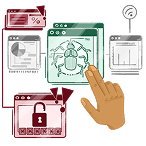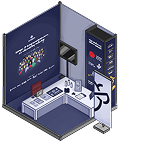Introduction
We are happy to announce our program! We've done our best to clean up our known issues and now would like to request your help to spot the ones we missed!
This section lists the assets, websites, products, and services that are considered in-scope and out-of-scope. This list is subject to change without notice and should be reviewed prior to submitting a finding.
Only the entities operated by the Software are in scope, in particular:
| Domain | Type |
| iqoption.com | Wildcard |
| *.iqoption.com | Wildcard |
| quadcode.com | Wildcard |
| *.quadcode.com | Wildcard |
Vulnerabilities in-scope (WEB):
- RCE
- Injections
- Broken Authentication
- Sensitive Data Exposure
- XML External Entities
- Broken Access Control
- Security Misconfiguration with a demonstration of how to exploit it
- Cross-Site Scripting
- Insecure Deserialization
Allowed actions for the critical vulnerabilities:
- Command Injection:
- Execute only benign commands via the web application or interface, such as:
cat /etc/passwd - Commands must only be used to demonstrate the ability to execute code.
- SQLi are limited by the following scope:
- Retrieving basic database information:
- Name of the current database:
SELECT database(); SELECT @@version; SELECT user(); SELECT system_user(); SELECT @@hostname; - Accessing database schema details:
SELECT table_schema; SELECT table_name; SELECT column_name; - Performing mathematical, conversion, or logical queries:
Includes the use of functions like SLEEP or similar, provided they do not extract data (other than those explicitly listed above).
- File Upload:
Testing vulnerabilities that may result in arbitrary file uploads or arbitrary file reads on the server must strictly adhere to the following guidelines:
Permitted Actions for File Reads
- When exploiting file read vulnerabilities, only files containing non-sensitive, demonstrable system information may be accessed. Examples include:
/etc/passwd, /proc/sys/kernel/hostname
- Further restrictions:
- Any action beyond reading the aforementioned files, such as accessing sensitive or critical configuration files, requires prior approval from our security team.
- Example file name:
bugbounty_2024-11-13.log.
- Reporting Requirements:
- Provide the following details in your report:
- Source: The IP address of the device used to perform the requests.
- Timestamp: Include the date, time, and timezone of your actions.
- Full Server Requests and Responses: Include all HTTP requests and their corresponding responses, including headers and bodies.
- Uploaded Files: List all uploaded files and their names.
- Callback Information: The IP address and port if a callback request (e.g., SSRF or RCE) was made.
- Accessed Data: Describe any data accessed, either deliberately or accidentally.
Assessment of Vulnerabilities Resulting from Data Leaks
If access to any services is obtained due to data leaks (e.g., authentication credentials found in leaked databases), the severity level of the issue will be determined not based on CVSS, but rather on factors such as the roles assigned to the affected account and the potential impact on our infrastructure and customers.
Additionally, we reserve the final right to determine eligibility for a bounty reward. The mere presence of valid credentials or access does not guarantee a payout, as certain accounts may belong to B2B partners or other entities that do not pose a direct risk to our customers' data.
Feedback
Would you like to help us improve our program or have some feedback to share, please send your anonymous feedback here:
Program feedback link
Please note this form will be checked periodically and should not be used for submission or support queries.























